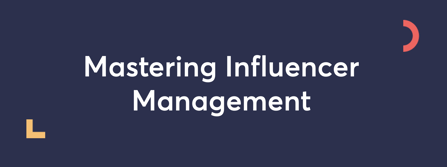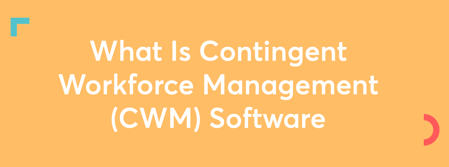How to hire and manage freelance writers
- 18 Aug 2022
- 10 mins read
- Posted in
If there were any doubts about the importance of having a strong brand presence online, the last few years have dispelled them once and for all. Now, it’s not only imperative to go digital, it is also important to be unique, engaging and above all, discoverable.
A great content strategy can get you there. But putting one together and executing it are easier said than done. Content trends today change faster than ever before, and are outpaced only by changes in digital and social media algorithms that decide how visible your content will be to your viewers. Brands everywhere are rushing to stay ahead of these changes and ensure that they remain on top of their consumers’ minds – and social media feeds!
The good news is that the world of work has now changed for good – global talent boundaries have all but dissolved, the freelance marketplace is thriving, and innovative new technologies are making it easier than ever before to connect and work with people from all around the world. All of this means you now have the best global talent at your disposal to help you create fantastic content. However, the trick lies in choosing the right people and getting the best out of them. A talent mismatch can quickly derail your projects, costing you time, money and effort.
So how do you get this right and make the most of skilled freelance writers – even if they happen to be based halfway across the world?
Contents
How to hire freelance content writers
- Identify your needs
- Find a great talent pool
- Follow a rigorous selection process
- Be upfront (and realistic) about your budget
- Work out the logistics
How to manage your freelance writers
- Follow a good onboarding process
- Brief them well
- Maintain a workflow
- Provide clear and consistent feedback
- Build long-term relationships
How to hire freelance content writers
Let us first discuss how to hire the best freelance writers. After all, there are thousands of talented professionals out there— how do you know who’s right for you?
1. Identify your needs
A comprehensive content strategy lets you figure out what kind of results you’re looking to achieve — and knowing this tells you exactly what to look for in a freelance writer. After all, ‘Content Writer’ is not just one job role — there are many niches and specializations under it. For example, you have long-form blog writers, short-form copywriters, journalists, technical writers, writers specializing in website content and so on. Of course, most writers today have a varied set of skills — but don’t assume that their skills will transfer seamlessly across various content requirements. A technical writer, for instance, may not be the right person to go to for some creative short stories (that is, unless they specifically list that as one of their skills!).
2. Find a great talent pool
Once you know what kind of content experts you need, where do you find writers with the relevant skills? One option is to reach out to professionals through hiring platforms like LinkedIn. Alternatively, today there are several great freelance marketplaces like PeoplePerHour, UpWork and Freelancer that give you access to millions of skilled professionals from around the world. These marketplaces have refined search tools that let you filter and shortlist people whose skills are the best match for your requirements. For a more selective talent pool, you can also look at exclusive services like TalentDesk.io, which operate as new-age recruiters within the freelance marketplace.
3. Follow a rigorous selection process
Now that you have your shortlist of suitable freelance writers, go through their profile in detail to see how experienced they are and whether they have worked in your specific industry before. Find out what their writing process is like and what kind of subject research they carry out.
This is where a lot of employers and managers make a big mistake – they go only by the details on a writer’s resume, and forget to ask them for work samples. Hiring creative professionals (like writers or designers) is quite different from engaging freelancers in more objective fields. A lot depends on the writer’s own voice and style of writing – so sometimes, even a highly qualified writer might not be the best fit for your requirements if their style does not align well with your brand voice. A writing sample then, will give you a fair estimate of their skills. Give them a quick overview of your requirements (that is, whether you’re looking for long-form content, social media copy etc.) so they can send you samples of their work that are closest to what you need. Aside from their style, this will also give you an opportunity to spot the more obvious red flags like grammatical errors, stylistic inconsistencies or factual inaccuracies. Of course, some platforms today make this step much easier. For instance, as a part of our TalentDesk offerings and thanks to our integration with the newly-launched service, Plus Works (a PeoplePerHour company), we are able to help you narrow down your options and choose from only the very best freelancers to begin with.
4. Be upfront (and realistic) about your budget
Having a fair compensation model is one of the easiest ways to attract the best talent. However, when you hire freelance writers, there are a couple of things to note. Firstly, the effort involved varies a great deal from one content project to another — and this affects the price. A highly technical, research-heavy article will understandably cost more than a lighter blog piece of the same length.
Secondly, freelance writers set their rates based on their skills and expertise rather than the exact number of words they write — so the lowest rate might not always mean the best deal. Knowing a writer’s capabilities lets you make an informed choice and offer a fair compensation based on the experience and quality you need.
5. Work out the logistics
Finally, ensure that the freelance writers you’ve chosen have the bandwidth and availability to take on your project. Give them a fair estimate of the effort involved and let them know the deadline you’re working with.
If they are available to take up the project, go ahead and plan out a broad timeline. But here are three important things to keep in mind as you do so. First, involve your freelance writer as you set your timelines. Many managers make inaccurate assumptions about how long a piece of work will actually take – but don’t forget, writing that looks effortless takes a lot of effort to achieve! Second, do keep enough time for a couple of rounds of feedback and iterations to get the best quality of content. And third, since you are looking to engage freelancers don’t forget that they may be based in a different geography and time zone altogether! Once you set your timelines, put together a freelance contract that outlines all the important deliverables and details...
How to manage your freelance writers
Congratulations — you now have an amazing team of freelance writers raring to get started! But, as important as it is to hire the right people, much of your project’s success depends on how well you manage your freelancers from here on in. Here’s how to get this right.
1. Follow a good onboarding process
Having an onboarding protocol is really important when you’re hiring a freelance writer because it ensures you don’t miss out any compliance-related details. Create a comprehensive onboarding form, where your freelancers can record all their information and upload their contracts, resumes, NDAs and other crucial documents.
Next, ensure that your new freelancers are added on to all the relevant communication platforms your team uses, and that they have access to all the tools they’ll need. Don’t forget to introduce them to the rest of your team, as well as to any other freelancers they’ll be collaborating with.
2. Brief them well
Based on your initial conversation, your freelance writers will already have some idea of what you need. But now, you will need to provide more granular information. For instance, your writer might already know that you need ten blogs for your website. Now, you will need to discuss each blog in detail, covering everything from the topic to the length, tone, keywords and so on.
Do also give them enough context about your brand and your target audience. Going through your brand book, creative guidelines or strategy documents will help your freelancers familiarize themselves with your brand and tailor your content to create maximum impact. So do ensure that you have these resources stored in a centralized location, so that every new writer has easy access to all the background information they need.
3. Maintain a workflow
Even with a comprehensive brief, your freelance writers may need some guidance from you — especially if they haven’t worked with you before. Having a well-defined workflow lets you track progress, review drafts and offer timely feedback so that they can make necessary edits well before your deadline.
A good workflow becomes even more crucial for bigger projects, where several freelancers may be involved. Here, you will need to keep track of who’s handling which part of the project, manage dependencies and ensure quality across the board. Building a smart toolkit makes it easy for you to maintain complex workflows, without having to resort to micromanagement. Here are a few tools that you may want to consider:
- Trello. This is a project management tool that lets you create job boards and break tasks down to detailed cards and lists. Its visual interface is great for tracking projects at a glance, and its easy-to-use collaboration features ensure that everyone is on the same page – which is crucial for larger teams of freelancers.
- Slack. Many organizations use Slack for internal communication, but few think to add their freelancers to the different threads and project channels. Doing so has valuable collaboration benefits – it can be the one platform where your freelance writers can communicate with all the relevant team members and internal stakeholders, without anyone getting left out of the loop.
- Zoom. Getting on a video or voice call with your freelance writers once in a while is a great idea and Zoom is an apt tool for that. It enables you to plan out tasks, present updates and share visual samples – all while making the interaction a bit more personal than just dropping a text or an email.
- monday.com. This is a great work management app that lets you create and execute personalized workflows. It offers a lot of use cases to streamline your work with your freelance writers. For instance, it lets you create content calendars, build email marketing workflows, track campaign progress and more. This automates the processes a bit more, and leaves less up to manual management.
4. Provide clear and consistent feedback
Edits and changes are a natural part of every freelance writer’s job. Done right, this step can be highly productive and rewarding, and can help you get the best out of your writers. But done wrong, this can be a frustrating exercise, rife with miscommunications and misunderstandings that result in an endless loop of reviews. Even worse, a lot of freelancers often report not receiving any feedback at all, which leaves them in the dark about how their work was received. So take the time to offer constructive feedback, keeping the following tips in mind: :
- Be specific. Avoid ambiguous, vague feedback that can be left open to interpretation. For instance, terms like ‘Make it impactful’ or ‘Replace with a better phrase’ are very abstract – what’s impactful or better for one person may not be seen as such by another! Tell your freelance writers exactly why something didn’t work and how they can make it closer to what you’re looking for.
- Offer examples. Find samples of the kind of content style and tone you like, and send them to your writers as references. Don’t forget to tell them why you like that particular style so much and why it works for your brand. Similarly, offering examples of what you don’t like can also be valuable – it tells your writers what not to do, and might help avoid another unnecessary round of iteration.
- Offer consolidated feedback. Receiving contradictory messages from different members of your team can be confusing for any freelance writer. To save time and effort, ensure that all your internal stakeholders are on the same page about what you want your writer to do – and then offer a consolidated round of feedback to your writers.
- Share positive feedback too. Since you are likely to just communicate with freelance writers virtually, it can be very demotivating for them to only receive blunt feedback about what needs to be changed. Don’t forget to let them know what they got right and why you liked specific parts of their work. A word or two of appreciation goes a long way!
5. Build long-term relationships
Managers usually find it easier to turn to a group of trusted content professionals, rather than having to hire new freelancers every time. That’s why, maintaining a company-wide database of good freelance writers is a great idea. It saves you time and recruitment costs, and enables you to find skilled professionals who are already familiar with your needs. Of course, you will need to build strong relationships with your freelancers too, so they’ll want to work with your organization again. Here are a few ways to ensure this:
- Have a seamless payment process in place. Not being paid on time (or paid at all!) is a major point of concern for many freelancers, even today. Having a streamlined payment process enables you to be transparent with your freelancers about when they should raise their worksheets, how their invoices will be processed and exactly when they can expect to receive the payments. Automating this step helps you make the process more consistent, and eliminate any room for error. This sets you apart as a reliable client and makes your writers keen to work with you again.
- Give them due credit for their work. If possible, give your freelance writer a byline for their work, or add a short note of thanks at the end that links to their bio. Not only is this a great way to acknowledge their contribution, it also helps them get new business. However, this might not always be feasible (for example, when you’re working with them for website or social media content). In these cases, offering to write them a testimonial or a referral can achieve the same result.
- Make them feel like a part of the team. A freelance writer’s job can be pretty solitary, and most of them would appreciate any effort you make to include them in your team. Giving them a shoutout for their work, appreciating them on your internal communication channels or even just a personal note of thanks can help them feel more involved and engaged with your organization.
Following these steps is simple enough when you’re working with a couple of content writers — but it gets progressively trickier as you bring more freelancers on board. Suddenly, you find most of your time being taken up by the intricacies of hiring and managing them. That’s where a platform like TalentDesk.io proves indispensable.
- It takes the guesswork out of the selection process: TalentDesk gives you access to a pool of 3 million freelancers, while our new service Plus Works matches you up with the best professionals from our community.
- Onboarding becomes simple: Our customized onboarding form helps you store all crucial freelancer details and paperwork securely in one place. So you can pull up any form or document later, without needing to hunt through various apps and inboxes.
- It makes project management a breeze: With comprehensive project dashboards, you get an overview of who’s handling which part of the project or just how far away that deadline is. This also lets you track your budgets and monitor project spend in real time.
- It simplifies the briefing process: The platform functions as a centralized hub for your brand guidelines and creative briefs, so your freelancers have access to all the information they’ll need to get started.
- Group chats get more organized: Our discussion boards lets you streamline all project-related communication with multiple freelancers, so nobody gets left out of the loop.
- It lets you manage a freelancer database: Keep track of all your contractors and freelancers, organized by location, rating, experience, skills and rates. So the next time you need a freelance writer, choosing the right person will take seconds.
- It takes the effort out of making payments: TalentDesk consolidates all your invoices so you just have to make one single payment rather than having to process hundreds of individual invoices.
So, with the best freelancers, the right processes and the perfect tools, your content marketing efforts are sure to be successful. Do reach out to us — and we’d be happy to help you plan it all out.

Sanhita Mukherjee
Speak to us to find out how we can help you pay your contractors more efficiently
Related articles
The Ultimate Guide to External Game Development
The Ultimate Guide to External Video Game Development
Explore our ultimate guide on external game development, covering crucial strategies, tools, and tips to manage freelance developers efficiently.
Freelancer vs. Design Agency: Why We Chose to Stay Agile
Freelancer vs. Design Agency: Why We Chose to Stay Agile
When we decided to revamp our website, we took time to consider the pros & cons of freelancers vs design agencies. Here's why we chose a freelancer.

What is a 1099 employee?
This is a complete guide on 1099 employees. Learn how to classify your workers, improve finances, boost employee morale, and enhance your reputation.
What is a Vendor Management System (VMS)? A Complete Guide
What is a Vendor Management System (VMS)? A Complete Guide
Discover what a Vendor Management System (VMS) is and why it’s essential for managing your workforce. Streamline vendor management with ease.
Best Contractor Management Software for 2025
Best Contractor Management Software for 2025
Discover the best contractor management software to streamline workflows, ensure compliance, and simplify payments. Manage global contractors with ease.

What is a Contractor Of Record (COR)?
Discover the role of a Contractor of Record (COR) – Learn how a COR streamlines contractor compliance and safeguards your business legally.

Mastering Influencer Management: Strategies for Effective Collaboration
Our guide to influencer management, exploring strategies, tools, and tips to create successful influencer relationships and enhance your marketing impact.

10 Reasons Why You Don’t Need a Contractor Management System
Discover 10 hilarious reasons why you absolutely don’t need a contractor management system - because who needs efficiency, happy freelancers, or sleep?

What Is Contingent Workforce Management Software?
Discover how contingent workforce management software enhances cost savings & access to talent. Learn about essential tools, compliance & best practices.

Deel vs. the Competition: Discover the Best HR Software Alternatives
Discover the best Deel alternatives for global HR management. Compare features, pricing, and reviews to find the best solution for your global workforce.
The Ultimate Guide to External Game Development
The Ultimate Guide to External Video Game Development
Explore our ultimate guide on external game development, covering crucial strategies, tools, and tips to manage freelance developers efficiently.
Freelancer vs. Design Agency: Why We Chose to Stay Agile
Freelancer vs. Design Agency: Why We Chose to Stay Agile
When we decided to revamp our website, we took time to consider the pros & cons of freelancers vs design agencies. Here's why we chose a freelancer.

What is a 1099 employee?
This is a complete guide on 1099 employees. Learn how to classify your workers, improve finances, boost employee morale, and enhance your reputation.
What is a Vendor Management System (VMS)? A Complete Guide
What is a Vendor Management System (VMS)? A Complete Guide
Discover what a Vendor Management System (VMS) is and why it’s essential for managing your workforce. Streamline vendor management with ease.
Best Contractor Management Software for 2025
Best Contractor Management Software for 2025
Discover the best contractor management software to streamline workflows, ensure compliance, and simplify payments. Manage global contractors with ease.

What is a Contractor Of Record (COR)?
Discover the role of a Contractor of Record (COR) – Learn how a COR streamlines contractor compliance and safeguards your business legally.

Mastering Influencer Management: Strategies for Effective Collaboration
Our guide to influencer management, exploring strategies, tools, and tips to create successful influencer relationships and enhance your marketing impact.

10 Reasons Why You Don’t Need a Contractor Management System
Discover 10 hilarious reasons why you absolutely don’t need a contractor management system - because who needs efficiency, happy freelancers, or sleep?

What Is Contingent Workforce Management Software?
Discover how contingent workforce management software enhances cost savings & access to talent. Learn about essential tools, compliance & best practices.

Deel vs. the Competition: Discover the Best HR Software Alternatives
Discover the best Deel alternatives for global HR management. Compare features, pricing, and reviews to find the best solution for your global workforce.
The Ultimate Guide to External Game Development
The Ultimate Guide to External Video Game Development
Explore our ultimate guide on external game development, covering crucial strategies, tools, and tips to manage freelance developers efficiently.
Freelancer vs. Design Agency: Why We Chose to Stay Agile
Freelancer vs. Design Agency: Why We Chose to Stay Agile
When we decided to revamp our website, we took time to consider the pros & cons of freelancers vs design agencies. Here's why we chose a freelancer.

What is a 1099 employee?
This is a complete guide on 1099 employees. Learn how to classify your workers, improve finances, boost employee morale, and enhance your reputation.